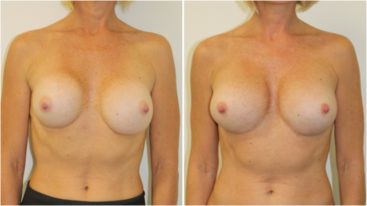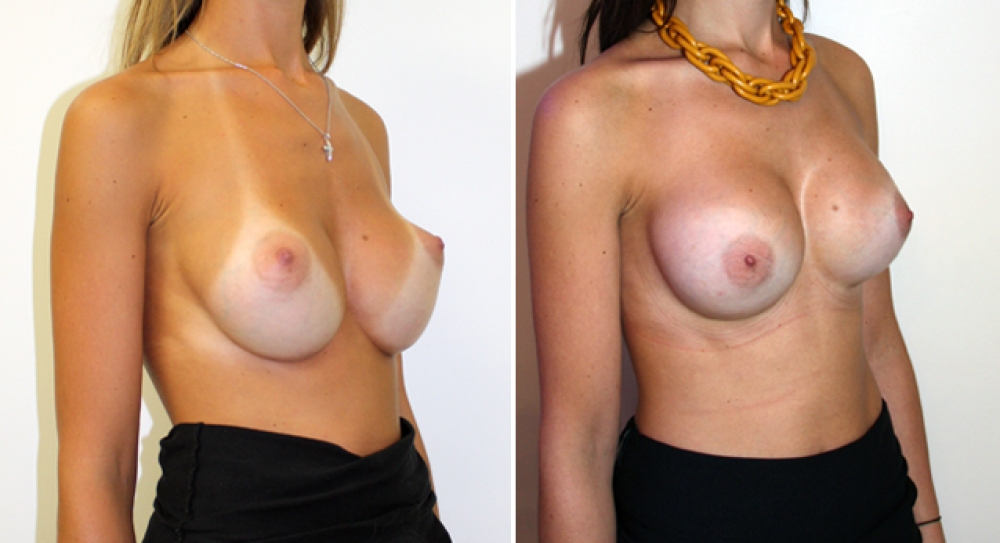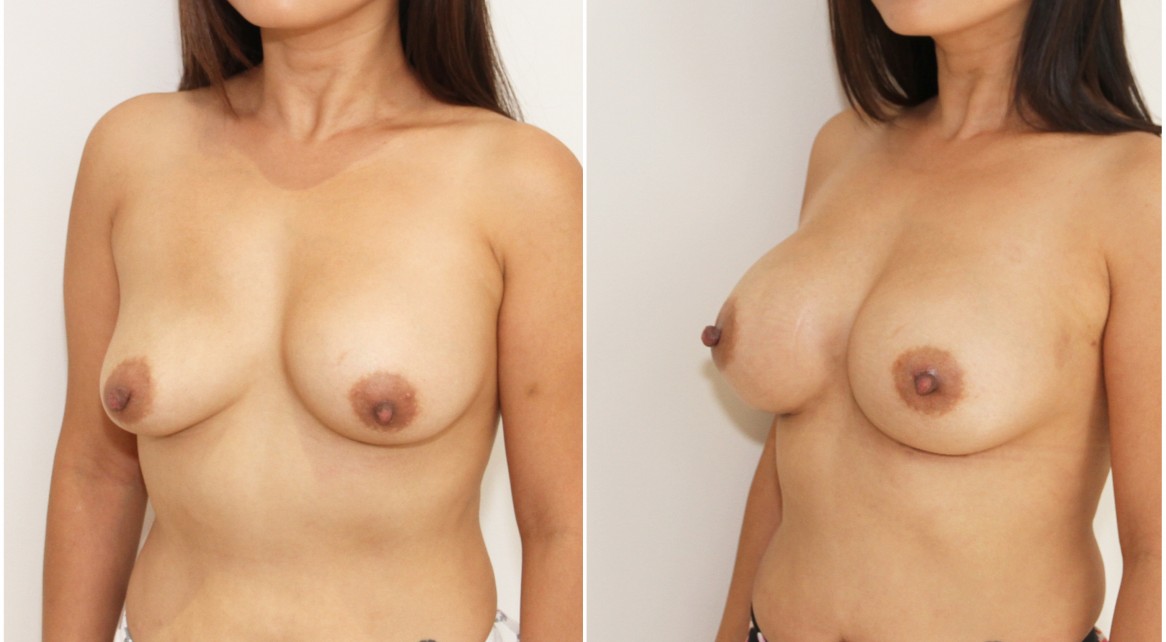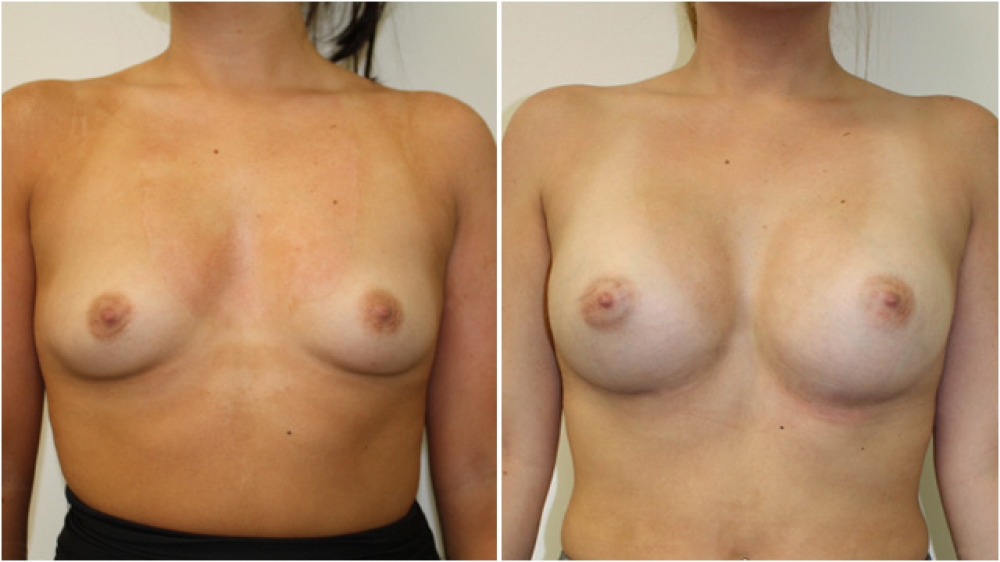Breast Augmentation Correction
 1292_patient-1-front
1292_patient-1-front Breast Augmentation Revision/Secondary Surgery
Problems with breast augmentation may occur as a result of poor planning, poor surgery or simply as a result of the way scarring and healing has occurred in the individual patient. For others, the implants are simply too old and need to be updated. It is important to note that breast implants are not lifetime devices and all eventually need to be replaced.
The assessment process and the technical aspects of the corrective surgery itself are usually many times more complicated than primary (or first-time) breast augmentation. For this reason, secondary (or corrective) plastic surgery is usually more expensive and takes much longer. Fat grafting is an important adjunct that is often employed as part of revisional surgery by Dr Miroshnik.
Some of the issues which lead women to seek corrective (or secondary) breast augmentation surgery include:
Bottoming Out and Lateralisation
Over time and where there is inadequate internal support, implants have a tendency to migrate both downwards and outwards. When they slide too low down the torso or too far outside the cleavage lines, implants may need to be revised and replaced with extra internal bra support added to prevent this from re-occurring. This phenomenon is one of the most common reasons for implant revision surgery.
Capsular Contracture
All implants have a capsule around them. These capsules, which are made by the body to wall-off the implant, normally remain soft and pliable. For various reasons however, in some patients, they can become firm over time making the breasts feel harder than they previously were.
To correct this problem a surgical capsulectomy is often required in which the old implant capsule is removed prior to the insertion of the new implant. Another technique often employed by Dr Miroshnik is the use of a ‘neo-pocket’, whereby the old capsule is isolated and the new implant is placed into a completely new pocket.
Capsular hardening rates are quoted at around 10% at 10 years for high cohesive silicone gel implants.
Excessively Wide Cleavage
Breasts that are too far apart may be due to poor implant choice and inadequate release of the pectoral muscles. The type of dual-plane positioning is often a factor as is the use or misuse of fat grafting.
Symmastia or ‘kissing implants’
This is where the breasts have literally joined together so that there is no cleavage.
Will usually require complex pocket readjustments and the use of narrower implants.
Implant Exchange
This may be for size issues ie. Upsize or Downsize. Alternatively, may be to change implant type eg. Saline to Cohesive silicone gel.
Double-Bubble Deformity
This is where the implant and the native breast tissue are at different anatomical levels.
Correction is complex and may require implant exchange, pocket adjustments (Capsulorrhaphy) or parenchymal modifications/ breast lifts as well as fat grafting and internal bra adjustments.
Implant Rippling
May result from too thin an envelope that is covering the implant. This can be very difficult to correct when the patient is very thin as there is little tissue available to cover the implant’s surface.
Poor Breast Shape
Can occur from a multitude of different reasons. Often a reshaping/lift procedure is required to correct this +/- internal bra support and fat grafting.
Scar Revision
When poor scars have formed for a multitude of reasons.
Breast Lift (Mastopexy)
When there is residual sagginess/droop in the breast that hasn’t been effectively taken up by the implant. This leads to what is known as a ‘waterfall deformity’ and usually means that a breast lift (mastopexy) is required.























































































